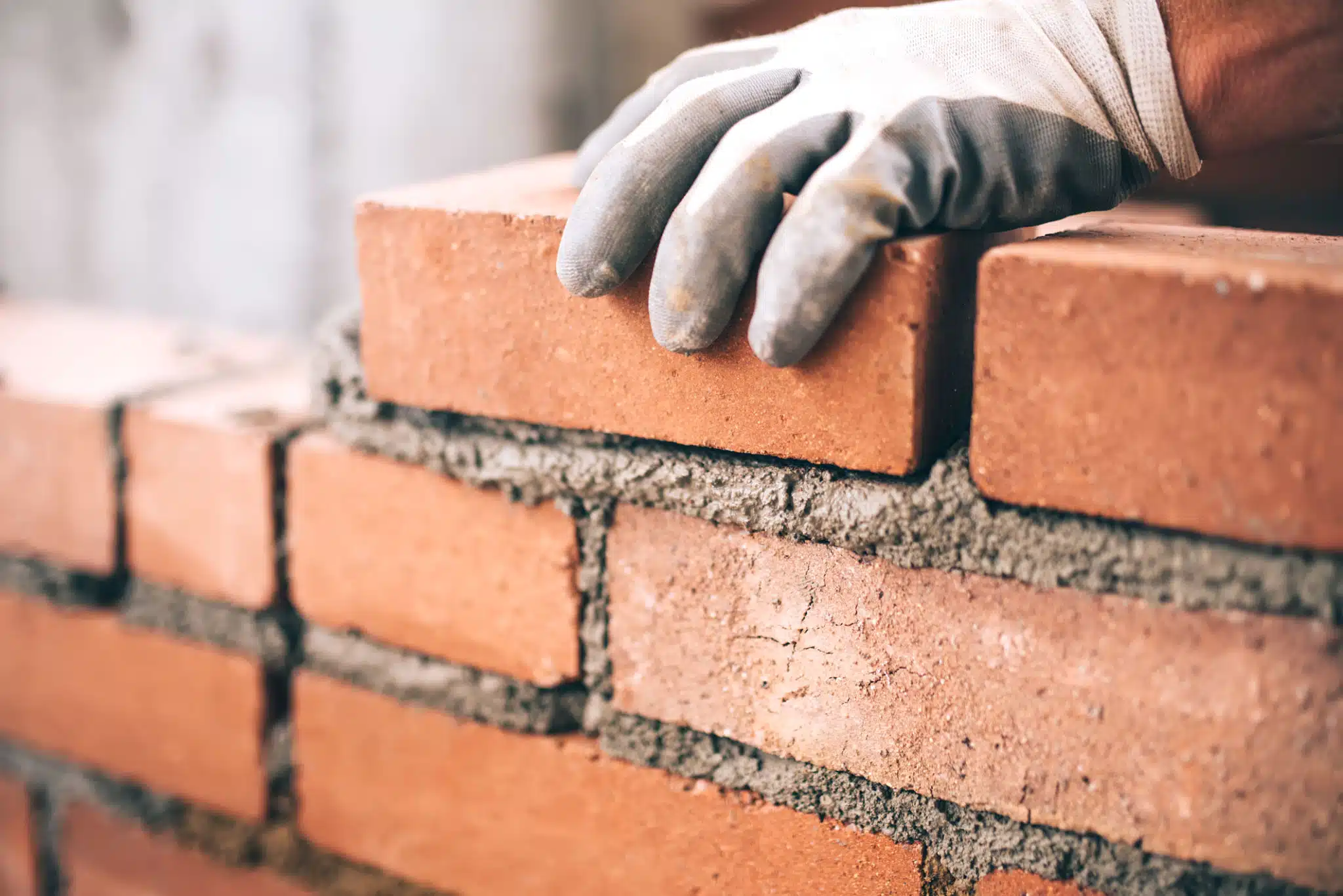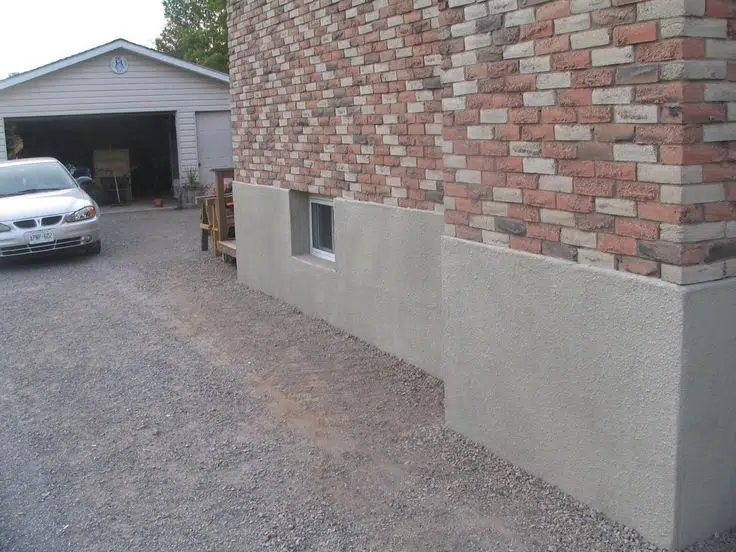When it comes to maintaining the structural integrity of your garage, understanding the impact of weather on brickwork is crucial, especially in southern Ontario’s unique climate. At Fix My Brick, we’ve seen firsthand how the region’s diverse weather patterns can affect brick structures over time. In this comprehensive guide, we’ll explore the challenges faced by garage brickwork in southern Ontario and provide expert advice on how to protect and maintain your property.
The Impact of Freeze-Thaw Cycles on Brickwork
One of the most significant weather-related challenges for brickwork in southern Ontario is the freeze-thaw cycle. This natural process can cause severe damage to your garage’s brick structure if not properly addressed.
Understanding the Freeze-Thaw Process
The freeze-thaw cycle occurs when water penetrates the porous surface of bricks and mortar, then freezes and expands. As temperatures fluctuate, this process repeats, gradually weakening the brickwork. In southern Ontario, where winter temperatures frequently hover around freezing, this cycle can happen multiple times in a single day, accelerating the wear and tear on your garage’s brickwork.
Signs of Freeze-Thaw Damage
Keep an eye out for these indicators of freeze-thaw damage:
- Spalling or flaking of brick surfaces
- Cracking or crumbling mortar joints
- Efflorescence (white, powdery deposits on brick surfaces)
- Brick displacement or bulging walls
Preventative Measures
To mitigate the effects of freeze-thaw cycles on your garage’s brickwork, consider these preventative steps:
- Apply a high-quality, breathable sealant to protect against moisture infiltration
- Ensure proper drainage around your garage to prevent water accumulation
- Regularly inspect and repair any cracks or damaged mortar joints
- Install proper ventilation to reduce moisture buildup inside the garage
Dealing with Moisture and Humidity in Ontario’s Climate
Southern Ontario’s climate is characterized by high humidity levels, particularly during the summer months. This moisture-rich environment can pose significant challenges for your garage’s brickwork.
The Effects of Excess Moisture
Prolonged exposure to moisture can lead to various issues for brick structures, including:
- Mold and mildew growth
- Deterioration of mortar joints
- Increased risk of efflorescence
- Structural weakening due to water penetration
Humidity Control Strategies
To protect your garage’s brickwork from excessive moisture and humidity, implement these strategies:
- Install a dehumidifier in your garage to maintain optimal humidity levels
- Ensure proper ventilation to allow moisture to escape
- Apply a moisture-resistant coating to interior brick surfaces
- Address any leaks or water infiltration points promptly
Seasonal Maintenance Tips for Garage Brickwork
Proper maintenance of your garage’s brickwork is essential for its longevity and performance. Follow these seasonal tips to keep your structure in top condition year-round.
Spring Maintenance
- Conduct a thorough inspection of your garage’s brickwork after winter
- Clean brick surfaces to remove any accumulated dirt or debris
- Repair any damaged mortar joints or cracked bricks
- Check and clean gutters to ensure proper water drainage
Summer Maintenance
- Monitor humidity levels inside the garage and use a dehumidifier if necessary
- Trim vegetation away from brick walls to prevent moisture retention
- Inspect for and address any pest infestations that may damage brickwork
- Apply or reapply sealant to protect against summer storms and humidity
Fall Maintenance
- Clear fallen leaves and debris from around the garage foundation
- Inspect and clean downspouts to ensure proper water diversion
- Check for and seal any gaps or cracks before winter arrives
- Consider applying an additional layer of sealant for extra protection
Winter Maintenance
- Remove snow and ice from brick surfaces promptly to prevent freeze-thaw damage
- Avoid using de-icing salts near brick structures, as they can cause deterioration
- Monitor indoor temperature and humidity levels to prevent condensation
- Inspect for any signs of water infiltration or frost damage regularly
Climate-Specific Brick Repair Techniques
When it comes to repairing brick structures in southern Ontario’s climate, specialized techniques are often required to ensure long-lasting results.
Repointing Mortar Joints
Repointing is a crucial repair technique for maintaining the integrity of your garage’s brickwork. In southern Ontario’s climate, it’s essential to use the right type of mortar and application method:
- Choose a mortar mix that matches the original in strength and composition
- Ensure proper mortar joint depth to allow for expansion and contraction
- Apply mortar in temperatures above 5°C (41°F) to ensure proper curing
- Use weather-resistant additives in the mortar mix for added durability
Brick Replacement
When individual bricks are severely damaged, replacement may be necessary. Consider these factors when replacing bricks in southern Ontario:
- Select bricks that match the existing structure in size, color, and porosity
- Use a breathable mortar mix to allow for moisture movement
- Ensure proper bonding between new and existing bricks
- Allow adequate curing time before exposing the repaired area to weather elements
Crack Repair
Addressing cracks in your garage’s brickwork is crucial for preventing further damage. Follow these steps for effective crack repair in Ontario’s climate:
- Clean the crack thoroughly to remove debris and loose material
- Use a flexible, weather-resistant sealant for smaller cracks
- For larger cracks, consider using epoxy injection or stitching techniques
- Allow proper curing time before exposing the repaired area to moisture
Long-term Weather Protection Strategies
To ensure the longevity of your garage’s brickwork in southern Ontario’s challenging climate, implement these long-term protection strategies:
Waterproofing
Proper waterproofing is essential for protecting your garage’s brickwork from moisture damage:
- Apply a high-quality, breathable waterproof sealant to exterior brick surfaces
- Install a waterproof membrane behind brick veneer walls
- Ensure proper flashing around windows, doors, and other openings
- Consider applying a clear, penetrating water repellent for added protection
Proper Drainage
Effective water management is crucial for protecting your garage’s brickwork:
- Install and maintain gutters and downspouts to divert water away from the structure
- Ensure proper grading around the garage to prevent water pooling
- Consider installing a French drain system for areas with persistent drainage issues
- Regularly clean and maintain existing drainage systems
Climate-Appropriate Design
When building or renovating your garage, consider design elements that account for southern Ontario’s climate:
- Incorporate adequate roof overhangs to protect walls from excess moisture
- Use vapor barriers and proper insulation to control indoor humidity
- Select brick types and mortar mixes suited for freeze-thaw conditions
- Design with proper ventilation in mind to minimize moisture buildup
Conclusion
Maintaining your garage’s brickwork in southern Ontario’s challenging climate requires a proactive approach and specialized knowledge. By understanding the unique weather-related challenges faced by brick structures in the region and implementing the strategies outlined in this guide, you can significantly extend the life and performance of your garage’s brickwork.
At Fix My Brick, we’re committed to helping homeowners protect and maintain their brick structures. If you have concerns about your garage’s brickwork or need expert assistance with repairs or maintenance, don’t hesitate to reach out to our team of southern Ontario brick repair specialists. Together, we can ensure your garage stands strong against the elements for years to come.
\n\n\nWhat are the main challenges for garage brickwork in southern Ontario?
The primary challenge for garage brickwork in southern Ontario is the freeze-thaw cycle, which can lead to serious damage. Additionally, high humidity levels during the summer can also affect the brickwork, causing issues such as mold growth and deterioration.
What is the freeze-thaw cycle and how does it affect brickwork?
The freeze-thaw cycle happens when water enters the porous bricks and mortar, freezes, and expands. Repeated cycles can weaken the structure, leading to spalling, cracking, and displacement of the bricks.
What are the signs of freeze-thaw damage to brickwork?
Signs of freeze-thaw damage include spalling or flaking brick surfaces, cracking or crumbling mortar, efflorescence (white powdery deposits), and bulging walls.
What preventative measures can be taken to protect garage brickwork from freeze-thaw damage?
Preventative measures include applying high-quality breathable sealants, ensuring proper drainage, regularly inspecting and repairing damaged areas, and installing ventilation to reduce moisture buildup.
How does high humidity affect garage brickwork, and what strategies can be used to control it?
High humidity can lead to issues such as mold growth, mortar deterioration, and structural weakening. Strategies to control humidity include using a dehumidifier, ensuring proper ventilation, and applying moisture-resistant coatings.
What are some seasonal maintenance tips for garage brickwork?
Seasonal maintenance tips include inspecting and cleaning brickwork in spring, monitoring humidity and trimming vegetation in summer, clearing debris in fall, and removing snow and ice in winter while avoiding de-icing salts.
What is repointing, and why is it important for garage brickwork?
Repointing involves repairing mortar joints to maintain the integrity of brickwork. It’s essential in southern Ontario to use the correct mortar and ensure proper joint depth to accommodate expansion and contraction.
What are the key factors to consider when replacing damaged bricks?
When replacing damaged bricks, it’s important to select bricks that match the existing structure in size, color, and porosity, use breathable mortar, and allow adequate curing time before exposure to the environment.
How can long-term protection strategies enhance the durability of garage brickwork?
Long-term protection strategies include waterproofing with quality sealants, ensuring proper drainage to divert water, and designing with climate-specific elements such as adequate roof overhangs and ventilation to reduce moisture buildup.
What should homeowners do if they have concerns about their garage’s brickwork?
If homeowners have concerns about their garage’s brickwork, they should consult with specialists like Fix My Brick for expert assistance in repairs and maintenance to ensure the structure withstands environmental challenges.



